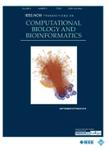版权所有:内蒙古大学图书馆 技术提供:维普资讯• 智图
内蒙古自治区呼和浩特市赛罕区大学西街235号 邮编: 010021

作者机构:Harbin Inst Technol Zhengzhou Res Inst Sch Med & Hlth Harbin 150001 Heilongjiang Peoples R China Harbin Inst Technol Sch Comp Sci & Technol Harbin 150001 Heilongjiang Peoples R China
出 版 物:《IEEE-ACM TRANSACTIONS ON COMPUTATIONAL BIOLOGY AND BIOINFORMATICS》 (IEEE/ACM Trans. Comput. BioL. Bioinf.)
年 卷 期:2023年第20卷第5期
页 面:3056-3067页
核心收录:
学科分类:0710[理学-生物学] 0808[工学-电气工程] 08[工学] 0714[理学-统计学(可授理学、经济学学位)] 0701[理学-数学] 0812[工学-计算机科学与技术(可授工学、理学学位)]
基 金:National Natural Science Foundation of China [62072095, 62225109] Fundamental Research Funds for the Central Universities [HIT.BRET.2022003] National Key R&D Program of China [2021YFC2100101]
主 题:Tensors Clustering algorithms Sequential analysis RNA Diffusion processes Topology Kernel Clustering single-cell RNA-seq tensor graph diffusion mapping cell heterogeneity
摘 要:Single-cell RNA sequencing (scRNA-seq) is a new technology that focuses on the expression levels for each cell to study cell heterogeneity. Thus, new computational methods matching scRNA-seq are designed to detect cell types among various cell groups. Herein, we propose a Multi-scale Tensor Graph Diffusion Clustering (MTGDC) for single-cell RNA sequencing data. It has the following mechanisms: 1) To mine potential similarity distributions among cells, we design a multi-scale affinity learning method to construct a fully connected graph between cells;2) For each affinity matrix, we propose an efficient tensor graph diffusion learning framework to learn high-order information among multi-scale affinity matrices. First, the tensor graph is explicitly introduced to measure cell-cell edges with local high-order relationship information. To further preserve more global topology structure information in the tensor graph, MTGDC implicitly considers the propagation of information via a data diffusion process by designing a simple and efficient tensor graph diffusion update algorithm. 3) Finally, we mix together the multi-scale tensor graphs to obtain the fusion high-order affinity matrix and apply it to spectral clustering. Experiments and case studies showed that MTGDC had obvious advantages over the state-of-art algorithms in robustness, accuracy, visualization, and speed.